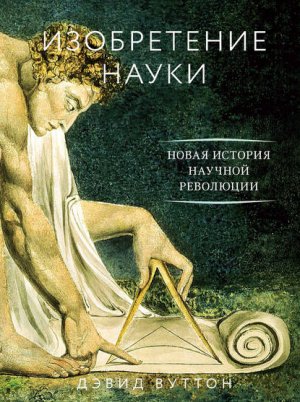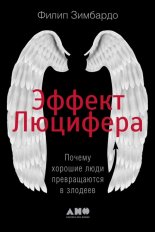Notice: Undefined variable: contentRead in /var/www/www-root/data/www/knizh.ru/funcs.php on line 681
Notice: Undefined variable: row in /var/www/www-root/data/www/knizh.ru/funcs.php on line 719
Notice: Trying to access array offset on value of type null in /var/www/www-root/data/www/knizh.ru/funcs.php on line 719
пїЅпїЅпїЅпїЅпїЅпїЅпїЅпїЅпїЅпїЅпїЅ пїЅпїЅпїЅпїЅпїЅ. пїЅпїЅпїЅпїЅпїЅ пїЅпїЅпїЅпїЅпїЅпїЅпїЅ пїЅпїЅпїЅпїЅпїЅпїЅпїЅ пїЅпїЅпїЅпїЅпїЅпїЅпїЅпїЅпїЅ пїЅпїЅпїЅпїЅпїЅпїЅ пїЅпїЅпїЅпїЅпїЅ

Idem. (ed.). The Intellectual Revolution of the Seventeenth Century. L.: Routledge & Kegan Paul, 1974.
Idem. New Light on the Invisible College: The Social Relations of English Science in the Midseventeenth CenturyпїЅ// Transactions of the Royal Historical Society (Fifth Series) 24 (1974). 19пїЅ42.
Idem. William HarveyпїЅs Conception of the Heart as a PumpпїЅ// Bulletin of the History of Medicine 39 (1965). 508пїЅ517.
WebsterпїЅJ.пїЅThe Displaying of Supposed Witchcraft. L.: JM, 1677.
WeeksпїЅS.пїЅFrancis Bacon and the Art-Nature DistinctionпїЅ// Ambix 54 (2007). 117пїЅ145.
Idem. The Role of Mechanics in Francis BaconпїЅs Great InstaurationпїЅ// Philosophies of Technology: Francis Bacon and His Contemporaries. Ed. C.пїЅZittel, G.пїЅEngel, R.пїЅNanni and N Karafyllis. Leiden: Brill, 2008. 133пїЅ197.
WeinbergпїЅS.пїЅTo Explain the World: The Discovery of Modern Science. 2015.
Idem. SokalпїЅs HoaxпїЅ// New York Review of Books. 8пїЅAugust 1996.
WeinerпїЅS.пїЅA.пїЅThe Civil Jury Trial and the Law-Fact DistinctionпїЅ// California Law Review 54 (1966). 1867пїЅ1938.
WeldпїЅC.пїЅR. A History of the Royal Society, with Memories of the Presidents. 2пїЅvols. L.: J.пїЅW.пїЅParker, 1848.
WengenrothпїЅU.пїЅScience, Technology and IndustryпїЅ// From Natural Philosophy to the Sciences: Writing the History of Nineteenth-century Science. Ed. D.пїЅCahan. Chicago: University of Chicago Press, 2003. 221пїЅ253.
WesleyпїЅW.пїЅG.пїЅThe Accuracy of Tycho BraheпїЅs InstrumentsпїЅ// Journal for the History of Astronomy 9 (1978). 42пїЅ53.
WestfallпїЅR.пїЅS.пїЅThe Development of NewtonпїЅs Theory of ColorпїЅ// Isis (1962). 339пїЅ358.
Idem. Never at Rest: A Biography of Isaac Newton. Cambridge: Cambridge University Press, 1980.
Idem. Newton and the Fudge FactorпїЅ// Science 179 (1973). 751пїЅ758.
Idem. Science and Technology during the Scientific Revolution: An Empirical ApproachпїЅ// Renaissance and Revolution. Humanists, Scholars, Craftsmen and Natural Philosophers in Early Modern Europe. Ed. J.пїЅV.пїЅField, F.пїЅA.пїЅJames. Cambridge: Cambridge University Press, 1997. 63пїЅ72.
Idem. The Scientific Revolution ReassertedпїЅ// Rethinking the Scientific Revolution. Ed. M.пїЅOsler. Cambridge: Cambridge University Press, 2000. 41пїЅ55.
Idem. Unpublished Boyle Papers Relating to Scientific Method: IпїЅ// Annals of Science 12 (1956). 63пїЅ73.
WestmanпїЅR.пїЅS.пїЅThe Copernican Question: Prognostication, Skepticism and Celestial Order. Berkeley: University of California Press, 2011.
Idem. The Copernican Question Revisited: A Reply to Noel Swerdlow and John HeilbronпїЅ// Perspectives on cience 21 (2013). 100пїЅ136.
WestmanпїЅR.пїЅS., McGuire J.пїЅE.пїЅHermeticism and the Scientific Revolution. Los Angeles: William Andrews Clark Memorial Library, 1977.
WestrumпїЅR.пїЅScience and Social Intelligence about Anomalies: The Case of MeteoritesпїЅ// Social Studies of Science 8 (1978). 461пїЅ493.
WhewellпїЅW.пїЅOn the Connexion of the Physical SciencesпїЅ// Quarterly Review 51 (1834). 54пїЅ68.
Idem. The Philosophy of the Inductive Sciences, Founded upon Their History. 2пїЅvols. L.: JohnпїЅW.пїЅParker, 1840.
WhiteпїЅG.пїЅThe Natural History and Antiquities of Selborne, in the County of Southampton. L.: B.пїЅWhite, 1789.
WhiteпїЅJ.пїЅThe Birth and Rebirth of Pictorial Space. Cambridge, Mass.: Belknap Press, 1987.
WhiteпїЅL.пїЅT.пїЅThe Medieval Roots of Modern Technology and Science [1963]пїЅ// Medieval Religion and Technology: Collected Essays. Berkeley: University of California Press, 1978. 75пїЅ91.
WhitleyпїЅR.пїЅBlack Boxism and the Sociology of Science: A Discussion of the Major Developments in the FieldпїЅ// Sociological Review 18 (1970). 61пїЅ92.
WierzbickaпїЅA.пїЅExperience, Evidence and Sense: The Hidden Cultural Legacy of English. Oxford: Oxford University Press, 2010.
WigelsworthпїЅJ.пїЅR.пїЅSelling Science in the Age of Newton: Advertising and the Commoditization of Knowledge. Farnham: Ashgate, 2011.
WildingпїЅN.пїЅGalileoпїЅs Idol: Gianfrancesco Sagredo and the Politics of Knowledge. Chicago: University of Chicago Press, 2014.
Idem. The Return of Thomas SalusburyпїЅs Life of Galileo (1664)пїЅ// British Journal for the History of Science 41 (2008). 241пїЅ265.
WilkinsпїЅJ. A Discourse Concerning a New World and Another Planet. L.: J.пїЅMaynard, 1640.
Idem. An Essay towards a Real Character, and a Philosophical Language. L.: S.пїЅGellibrand, 1668.
Idem. Mathematicall Magick. L.: S.пїЅGellibrand, 1648.
Idem. Of the Principles and Duties of Natural Religion. L.: T.пїЅBasset, 1675.
WilliamsпїЅB.пїЅEssays and Reviews, 1959пїЅ2002. Princeton: Princeton University Press, 2014.
Idem. Wittgenstein and IdealismпїЅ// Royal Institute of Philosophy Lectures 7 (1973). 76пїЅ95.
WilliamsпїЅG.пїЅVoyages of Delusion: The Quest for the Northwest Passage. New Haven: Yale University Press, 2002.
WillmothпїЅF.пїЅRmer, Flamsteed, Cassini and the Speed of LightпїЅ// Centaurus 54 (2012). 39пїЅ57.
WilsonпїЅA., AshplantпїЅT.пїЅG.пїЅWhig History and Present-centred HistoryпїЅ// Historical Journal 31 (1988). 1пїЅ16.
WilsonпїЅB.пїЅR. (ed.). Rationality. Oxford: Blackwell, 1970.
WilsonпїЅC.пїЅThe Invisible World: Early Modern Philosophy and the Invention of the Microscope. Princeton: Princeton University Press, 1995.
Idem. From Limits to Laws: The Construction of the Nomological Image of Nature in Early Modern PhilosophyпїЅ// Natural Law and Laws of Nature in Early Modern Europe. Ed. L.пїЅJ.пїЅDaston, M.пїЅStolleis. Farnham: Ashgate, 2008. 13пїЅ28.
WilsonпїЅC.пїЅA.пїЅFrom KeplerпїЅs Laws, So-called, to Universal Gravitation: Empirical FactorsпїЅ// Archive for History of Exact Sciences 6 (1970). 89пїЅ170.
WilsonпїЅG.пїЅOn the Early History of the Air-pump in EnglandпїЅ// Edinburgh New Philosophy Journal 46 (1849). 330пїЅ354.
WinchпїЅP.пїЅThe Idea of a Social Science and Its Relation to Philosophy. L.: Routledge & Kegan Paul, 1958.
WintzerпїЅE.пїЅDenis Papins Erlebnisse in Marburg, 1688пїЅ1695. Marburg: N Elwert, 1898.
WithingtonпїЅP.пїЅSociety in Early Modern England. Cambridge: Polity, 2010.
WittgensteinпїЅL.пїЅOn Certainty. Ed. G. E.пїЅM.пїЅAnscombe, G. H.пїЅV.пїЅWright. Oxford: Blackwell, 1969.
Idem. Philosophical Investigations. Oxford: Blackwell, 1953.
Idem. Remarks on FrazerпїЅs Golden BoughпїЅ// Philosophical Occasions, 1912пїЅ1951. Ed. J. C.. Klagge, A.пїЅNordmann. Indianapolis: Hackett, 1993. 115пїЅ155.
Idem. Tractatus Logico-Philosophicus. L.: Kegan Paul, Trench, Trubner, 1933.
WolperпїЅR.пїЅS.пїЅThe Rhetoric of Gunpowder and the Idea of ProgressпїЅ// Journal of the History of Ideas 31 (1970). 589пїЅ598.
WomersleyпїЅD.пїЅDean Swift Hears a Sermon: Robert HowardпїЅs Ash Wednesday Sermon of 1725 and GulliverпїЅs TravelsпїЅ// Review of English Studies 60 (2009). 744пїЅ762.
WoodпїЅP.пїЅB.пїЅMethodology and Apologetics: Thomas SpratпїЅs History of the Royal SocietyпїЅ// British Journal for the History of Science 13 (1980). 1пїЅ26.
WoodwardпїЅD. (ed.). The History of Cartography. 6пїЅvols. Vol. 3: Cartography in the European Renaissance. Chicago: University of Chicago Press, 2007.
Idem. The Image of the Spherical EarthпїЅ// Perspecta 25 (1989). 2пїЅ15.
WoodwardпїЅJ.пїЅDr FriendпїЅs Epistle to Dr Mead. L.: J.пїЅRoberts, 1719.
WoottonпїЅD.пїЅAccuracy and Galileo: A Case Study in Quantification and the Scientific RevolutionпїЅ// Journal of The Historical Society 10 (2010). 43пїЅ55.
Idem. Bad Medicine: Doctors Doing Harm Since Hippocrates. Oxford: Oxford University Press, 2006.
Idem. Galileo: Reflections on FailureпїЅ// Causation and Modern Philosophy. Ed. K.пїЅAllen, T.пїЅStoneham. Routledge, 2011. 13пїЅ30.
Idem. Galileo: Watcher of the Skies. New Haven: Yale University Press, 2010.
Idem. The Hard Look BackпїЅ// Times Literary Supplement 14 (2003). 8пїЅ10.
Idem. HumeпїЅs пїЅOf MiraclesпїЅ: Probability and IrreligionпїЅ// Studies in the Philosophy of the Scottish Enlightenment. Ed. M.пїЅA.пїЅStewart. Oxford: Oxford University Press, 1990. 191пїЅ229.
Idem. Hutchinson, FrancisпїЅ// Encyclopedia of Witchcraft: The Western Tradition. 4пїЅvols. Vol. 2. Ed. R.пїЅM.пїЅGolden. Santa Barbara: ABCCLIO, 2006. 531, 532.
Idem. Liberty, Metaphor and Mechanism: пїЅChecks and BalancesпїЅ and the Origins of Modern ConstitutionalismпїЅ// Liberty and American Experience in the Eighteenth Century. Ed. D.пїЅWomersley. Indianapolis: Liberty Fund, 2006. 209пїЅ274.
Idem. Lucien Febvre and the Problem of UnbeliefпїЅ// Journal of Modern History 60 (1988). 695пїЅ730.
WottonпїЅW. A Defense of the Reflections upon Ancient and Modern Learning. L.: Goodwin, 1705.
Idem. Reflections upon Ancient and Modern Learning. L.: P.пїЅBuck, 1694.
WottonпїЅW., BentleyпїЅR.пїЅReflections upon Ancient and Modern Learning. The Second Part, with a Dissertation upon the Epistles of Phalaris. L.: PB, 1698.
WrightпїЅJ.пїЅKirtland. The Geographical Lore of the Time of the Crusades. N. Y.: American Geographical Society, 1925.
WussingпїЅH.пїЅDie grosse Erneuerung: Zur Geschichte der wissenschaftlichen Revolution. Basle: Birkhuser, 2002.
YatesпїЅF.пїЅA.пїЅGiordano Bruno and the Hermetic Tradition. Chicago: University of Chicago Press, 1991.
YeomansпїЅD.пїЅK., RaheпїЅJ., FreitagпїЅR.пїЅS.пїЅThe History of Comet HalleyпїЅ// Journal of the Royal Astronomical Society of Canada 80 (1986). 62пїЅ86.
YiuпїЅY.пїЅThe Mirror and Painting in Early Renaissance TextsпїЅ// Early Science and Medicine 10 (2005). 187пїЅ210.
YoltonпїЅJ.пїЅW.пїЅThinking Matter: Materialism in Eighteenth-century Britain. Minneapolis: University of Minnesota Press, 1983.
ZambelliпїЅP.пїЅIntroduzioneпїЅ// Alexandre Koyr, Dal mondo del pressappoco allпїЅuniverso della precisione. Turin: Einaudi, 1967. 7пїЅ46.
ZammitoпїЅJ.пїЅH. A Nice Derangement of Epistemes: Post-positivism in the Study of Science from Quine to Latour. Chicago: University of Chicago Press, 2004.
ZandenпїЅJ.пїЅL. van. The Long Road to the Industrial Revolution. Leiden: Brill, 2009.
ZarlinoпїЅG.пїЅDimostrationi harmoniche. Venice: Francesco de IпїЅFranceschi, 1571.
ZhmudпїЅL.пїЅThe Origin of the History of Science in Classical Antiquity. Trans. A.пїЅChernoglazov. Berlin: Walter de Gruyter, 2006.
ZilselпїЅE.пїЅThe Genesis of the Concept of Scientific ProgressпїЅ// Journal of the History of Ideas 6 (1945) 325пїЅ349.
Idem. The Origin of William GilbertпїЅs Scientific MethodпїЅ// Journal of the History of Ideas 2 (1941). 1пїЅ32.
Idem. The Sociological Roots of ScienceпїЅ// American Journal of Sociology 47 (1942). 544пїЅ562.
пїЅпїЅпїЅпїЅпїЅпїЅпїЅпїЅпїЅпїЅпїЅпїЅпїЅ
пїЅпїЅпїЅпїЅпїЅпїЅпїЅпїЅпїЅ пїЅпїЅпїЅпїЅ пїЅпїЅпїЅпїЅпїЅ пїЅпїЅпїЅпїЅпїЅпїЅпїЅпїЅ пїЅпїЅпїЅпїЅпїЅпїЅ пїЅпїЅпїЅпїЅпїЅпїЅ пїЅпїЅпїЅпїЅпїЅпїЅпїЅпїЅ. 1620. пїЅпїЅThe Trustees of the British Museum, London.
пїЅпїЅпїЅпїЅпїЅ пїЅпїЅпїЅпїЅпїЅпїЅпїЅ (1490пїЅ1546). пїЅпїЅпїЅпїЅпїЅпїЅпїЅ пїЅпїЅпїЅпїЅпїЅпїЅ. пїЅпїЅпїЅпїЅпїЅпїЅпїЅ пїЅпїЅпїЅпїЅпїЅпїЅпїЅпїЅ. National Museum, Madrid; photo пїЅ TarkerпїЅ/Bridgeman Images.
пїЅпїЅпїЅпїЅпїЅ пїЅпїЅпїЅпїЅпїЅпїЅпїЅпїЅпїЅ пїЅпїЅпїЅпїЅпїЅпїЅпїЅпїЅпїЅ. пїЅпїЅпїЅпїЅпїЅпїЅпїЅ пїЅпїЅпїЅпїЅ пїЅпїЅпїЅпїЅпїЅ пїЅО пїЅпїЅпїЅпїЅпїЅ пїЅпїЅпїЅпїЅпїЅпїЅ. 1573. Universal Images/ Getty Images.
пїЅпїЅпїЅпїЅпїЅпїЅпїЅпїЅпїЅ пїЅпїЅпїЅпїЅ пїЅпїЅпїЅпїЅпїЅпїЅпїЅ пїЅпїЅпїЅ пїЅпїЅпїЅ пїЅпїЅпїЅ пїЅпїЅпїЅпїЅпїЅпїЅ пїЅпїЅпїЅпїЅпїЅпїЅ пїЅпїЅпїЅпїЅпїЅпїЅпїЅпїЅпїЅ. пїЅпїЅ. 1591. Rijksmuseum, Amsterdam.
пїЅпїЅ пїЅпїЅпїЅпїЅпїЅпїЅпїЅ. пїЅз «пїЅпїЅпїЅпїЅпїЅпїЅпїЅпїЅпїЅпїЅпїЅпїЅ. 1647. пїЅпїЅThe Royal Society, London.
пїЅпїЅпїЅпїЅпїЅпїЅпїЅ пїЅпїЅпїЅпїЅпїЅ пїЅ[пїЅпїЅпїЅпїЅпїЅпїЅ]пїЅ. пїЅз «пїЅпїЅпїЅпїЅпїЅпїЅпїЅпїЅпїЅпїЅпїЅпїЅпїЅпїЅ пїЅпїЅпїЅпїЅпїЅ пїЅпїЅпїЅпїЅпїЅпїЅпїЅпїЅпїЅ. 1731. Leeds University, Special Collections, Brotherton Library.
пїЅпїЅпїЅпїЅпїЅ, пїЅпїЅпїЅпїЅпїЅпїЅпїЅпїЅпїЅ пїЅпїЅпїЅпїЅпїЅпїЅпїЅ пїЅпїЅпїЅпїЅпїЅпїЅпїЅпїЅпїЅ. пїЅпїЅпїЅпїЅпїЅпїЅпїЅ пїЅпїЅпїЅпїЅпїЅпїЅпїЅпїЅ пїЅпїЅпїЅпїЅпїЅпїЅпїЅпїЅпїЅпїЅпїЅ пїЅпїЅпїЅпїЅпїЅпїЅпїЅпїЅпїЅпїЅпїЅпїЅ пїЅпїЅпїЅпїЅпїЅпїЅпїЅпїЅпїЅпїЅпїЅпїЅпїЅпїЅпїЅпїЅ. 1514. Bayerische Staatsbibliothek, Mnchen.
пїЅпїЅпїЅпїЅпїЅ пїЅпїЅпїЅпїЅпїЅ, пїЅпїЅпїЅпїЅ, пїЅпїЅпїЅпїЅпїЅпїЅпїЅ пїЅпїЅпїЅпїЅпїЅ. пїЅз «пїЅпїЅпїЅпїЅпїЅпїЅпїЅпїЅ пїЅпїЅпїЅпїЅпїЅпїЅ пїЅпїЅпїЅпїЅпїЅпїЅпїЅпїЅпїЅпїЅ. пїЅпїЅпїЅпїЅпїЅпїЅпїЅ, 1501. Bayerische Staatsbibliothek, Mnchen. пїЅпїЅпїЅпїЅпїЅпїЅ пїЅпїЅпїЅпїЅпїЅпїЅ пїЅпїЅпїЅпїЅ пїЅпїЅпїЅпїЅ (пїЅпїЅпїЅпїЅпїЅ пїЅпїЅпїЅпїЅпїЅпїЅ пїЅ) пїЅпїЅпїЅпїЅпїЅпїЅ (пїЅпїЅпїЅпїЅпїЅ пїЅпїЅпїЅпїЅпїЅпїЅ пїЅ) пїЅпїЅпїЅпїЅпїЅпїЅпїЅпїЅпїЅпїЅпїЅпїЅпїЅпїЅ пїЅпїЅпїЅпїЅпїЅпїЅпїЅпїЅпїЅпїЅпїЅ пїЅпїЅпїЅпїЅпїЅпїЅ пїЅпїЅпїЅпїЅпїЅ пїЅпїЅпїЅпїЅпїЅ. пїЅз «пїЅпїЅпїЅпїЅпїЅпїЅпїЅпїЅ пїЅпїЅпїЅпїЅпїЅпїЅ пїЅпїЅпїЅпїЅпїЅпїЅпїЅпїЅпїЅпїЅ. пїЅпїЅпїЅпїЅпїЅпїЅпїЅ, 1537. Wellcome Library, London.
пїЅпїЅпїЅпїЅпїЅ пїЅпїЅпїЅпїЅ. пїЅз «пїЅпїЅпїЅпїЅпїЅпїЅпїЅпїЅпїЅ пїЅпїЅпїЅпїЅпїЅпїЅпїЅпїЅ. пїЅпїЅпїЅ, 1490. James Ford Bell Library, University of Minnesota, USA.
пїЅпїЅпїЅпїЅпїЅ пїЅпїЅпїЅпїЅпїЅ. пїЅпїЅпїЅпїЅпїЅпїЅпїЅпїЅпїЅпїЅпїЅпїЅпїЅпїЅ пїЅпїЅпїЅпїЅпїЅпїЅ пїЅпїЅпїЅпїЅпїЅпїЅпїЅпїЅпїЅпїЅпїЅ. пїЅпїЅпїЅпїЅпїЅпїЅпїЅпїЅпїЅпїЅпїЅпїЅ пїЅпїЅпїЅпїЅпїЅпїЅпїЅ, 1581. Bayerische Staatsbibliothek, Mnchen.
пїЅпїЅпїЅпїЅпїЅ пїЅпїЅпїЅпїЅпїЅ пїЅпїЅпїЅ пїЅпїЅпїЅпїЅпїЅпїЅ пїЅпїЅпїЅпїЅпїЅ. пїЅз «пїЅпїЅпїЅпїЅпїЅпїЅпїЅпїЅ пїЅпїЅпїЅпїЅпїЅпїЅ пїЅпїЅпїЅпїЅпїЅпїЅпїЅпїЅпїЅпїЅ. 1518. Bayerische Staatsbibliothek, Mnchen.
пїЅпїЅпїЅпїЅпїЅпїЅпїЅпїЅпїЅпїЅпїЅ пїЅпїЅпїЅпїЅпїЅ пїЅпїЅпїЅпїЅпїЅпїЅ, пїЅпїЅпїЅпїЅпїЅ, пїЅпїЅпїЅпїЅпїЅпїЅпїЅпїЅ пїЅпїЅпїЅпїЅпїЅпїЅ. пїЅпїЅпїЅпїЅпїЅпїЅпїЅпїЅпїЅпїЅпїЅпїЅпїЅпїЅ пїЅпїЅпїЅпїЅпїЅпїЅ пїЅпїЅпїЅпїЅпїЅпїЅпїЅпїЅпїЅпїЅпїЅ. пїЅпїЅпїЅпїЅпїЅпїЅпїЅпїЅпїЅпїЅпїЅпїЅ пїЅпїЅпїЅпїЅпїЅпїЅпїЅ, 1581. Wellcome Library, London.
пїЅпїЅпїЅпїЅпїЅпїЅпїЅ пїЅпїЅпїЅпїЅпїЅпїЅпїЅ пїЅпїЅпїЅпїЅпїЅ пїЅпїЅпїЅпїЅпїЅпїЅ пїЅпїЅпїЅпїЅпїЅпїЅ. пїЅз «пїЅпїЅпїЅпїЅпїЅпїЅпїЅпїЅ пїЅпїЅпїЅпїЅпїЅпїЅ пїЅпїЅпїЅпїЅпїЅпїЅпїЅпїЅпїЅпїЅ (SphaeraпїЅ per Petrum Apianum). 1526. Bayerische Staatsbibliothek, Mnchen.
пїЅпїЅпїЅпїЅпїЅпїЅпїЅпїЅпїЅпїЅпїЅ пїЅпїЅпїЅпїЅпїЅ пїЅпїЅAnatomia physico-hydrostatica fontium ac fluminum. 1663. Bayerische Staatsbibliothek, Mnchen.
пїЅпїЅпїЅпїЅпїЅпїЅпїЅпїЅпїЅпїЅпїЅ пїЅпїЅпїЅпїЅпїЅ пїЅпїЅпїЅпїЅпїЅпїЅ пїЅпїЅпїЅпїЅпїЅпїЅ. пїЅпїЅпїЅпїЅпїЅпїЅпїЅпїЅпїЅпїЅ пїЅпїЅпїЅпїЅ пїЅпїЅпїЅпїЅпїЅпїЅ пїЅпїЅпїЅпїЅпїЅпїЅпїЅпїЅпїЅпїЅпїЅпїЅпїЅпїЅ пїЅпїЅпїЅпїЅпїЅ пїЅпїЅпїЅпїЅпїЅпїЅпїЅпїЅ. 1596. Special Collections, University of Glasgow.
пїЅпїЅпїЅпїЅпїЅпїЅ пїЅпїЅпїЅпїЅпїЅпїЅ пїЅпїЅпїЅпїЅпїЅ пїЅпїЅпїЅпїЅпїЅпїЅ пїЅпїЅпїЅпїЅпїЅпїЅ пїЅпїЅпїЅпїЅпїЅпїЅпїЅпїЅпїЅпїЅпїЅпїЅ пїЅпїЅпїЅпїЅпїЅ пїЅпїЅпїЅпїЅпїЅ. пїЅпїЅAnatomia physico-hydrostatica. 1663. Bayerische Staatsbibliothek, Mnchen.
пїЅпїЅпїЅпїЅпїЅпїЅ пїЅпїЅпїЅпїЅпїЅпїЅпїЅ пїЅпїЅпїЅпїЅпїЅпїЅпїЅпїЅпїЅ пїЅпїЅпїЅпїЅпїЅпїЅпїЅпїЅпїЅпїЅпїЅпїЅ пїЅпїЅпїЅпїЅпїЅпїЅпїЅпїЅпїЅпїЅпїЅпїЅ. Special Collections, Lehigh University Libraries, Pennsylvania, USA.
пїЅпїЅпїЅпїЅпїЅпїЅпїЅ пїЅпїЅпїЅпїЅпїЅпїЅпїЅпїЅпїЅ пїЅпїЅпїЅпїЅпїЅпїЅпїЅпїЅпїЅпїЅпїЅпїЅпїЅ пїЅпїЅпїЅпїЅпїЅпїЅпїЅпїЅпїЅпїЅпїЅпїЅпїЅпїЅпїЅпїЅпїЅпїЅ пїЅпїЅпїЅпїЅпїЅпїЅпїЅ. пїЅпїЅпїЅпїЅпїЅпїЅпїЅпїЅпїЅпїЅпїЅпїЅпїЅпїЅ пїЅпїЅпїЅпїЅпїЅпїЅпїЅпїЅ пїЅпїЅпїЅпїЅпїЅпїЅпїЅпїЅ пїЅО пїЅпїЅпїЅпїЅпїЅпїЅпїЅпїЅ пїЅпїЅпїЅпїЅпїЅпїЅпїЅпїЅ пїЅпїЅпїЅпїЅ. 1543. Jagiellonian University Library, Krakw. Ms.10000, f. 9v.
пїЅпїЅпїЅпїЅпїЅпїЅпїЅпїЅпїЅпїЅпїЅпїЅпїЅ пїЅпїЅпїЅпїЅпїЅпїЅпїЅ пїЅпїЅпїЅпїЅпїЅпїЅпїЅпїЅ пїЅпїЅпїЅпїЅпїЅпїЅпїЅпїЅпїЅ. Linda Hall Library Images, Linda Hall Library of Science, Engineering & Technology, USA.
пїЅпїЅпїЅпїЅпїЅпїЅпїЅпїЅпїЅпїЅ пїЅпїЅпїЅпїЅпїЅпїЅпїЅпїЅ пїЅпїЅпїЅпїЅпїЅпїЅпїЅпїЅпїЅпїЅ пїЅпїЅпїЅпїЅпїЅпїЅпїЅпїЅпїЅпїЅпїЅ. 1652. Wellcome Library, London.
пїЅпїЅпїЅпїЅпїЅпїЅпїЅпїЅпїЅ пїЅпїЅпїЅпїЅпїЅпїЅпїЅпїЅпїЅ. пїЅпїЅпїЅпїЅпїЅпїЅпїЅпїЅпїЅпїЅ пїЅпїЅпїЅпїЅпїЅпїЅпїЅпїЅ пїЅпїЅпїЅпїЅпїЅпїЅпїЅпїЅпїЅпїЅпїЅпїЅпїЅпїЅ. 1521. RIBA Library, Photographic Collections, London.
пїЅпїЅпїЅпїЅпїЅпїЅпїЅпїЅпїЅпїЅпїЅ пїЅпїЅпїЅпїЅпїЅпїЅпїЅпїЅпїЅпїЅпїЅ пїЅпїЅпїЅпїЅпїЅ пїЅпїЅпїЅпїЅпїЅ. пїЅз «пїЅпїЅпїЅпїЅпїЅпїЅпїЅпїЅ пїЅпїЅпїЅпїЅпїЅпїЅпїЅпїЅпїЅпїЅпїЅ пїЅпїЅпїЅпїЅпїЅпїЅпїЅпїЅпїЅпїЅ. 1598. Special Collections, Lehigh University Libraries, Pennsylvania, USA.
пїЅпїЅпїЅпїЅпїЅпїЅпїЅпїЅпїЅпїЅпїЅпїЅпїЅ пїЅпїЅпїЅпїЅпїЅпїЅпїЅпїЅпїЅпїЅпїЅпїЅ пїЅпїЅпїЅпїЅпїЅпїЅпїЅ. пїЅпїЅпїЅпїЅпїЅпїЅпїЅ пїЅпїЅпїЅпїЅпїЅпїЅпїЅпїЅпїЅпїЅ пїЅпїЅпїЅпїЅпїЅпїЅпїЅпїЅ пїЅпїЅпїЅпїЅпїЅпїЅпїЅпїЅ пїЅпїЅпїЅпїЅпїЅпїЅ пїЅпїЅпїЅпїЅпїЅпїЅпїЅпїЅпїЅпїЅпїЅпїЅпїЅ пїЅпїЅпїЅпїЅпїЅпїЅпїЅпїЅпїЅпїЅпїЅпїЅ. Museum of the History of Science, Oxford.
пїЅпїЅпїЅпїЅпїЅпїЅпїЅпїЅпїЅпїЅпїЅ пїЅпїЅпїЅпїЅпїЅпїЅпїЅпїЅ. пїЅпїЅпїЅпїЅпїЅпїЅпїЅпїЅпїЅпїЅ пїЅпїЅпїЅпїЅпїЅпїЅпїЅ пїЅО пїЅпїЅпїЅпїЅпїЅпїЅпїЅпїЅ пїЅпїЅпїЅпїЅпїЅпїЅпїЅпїЅпїЅпїЅпїЅпїЅпїЅ пїЅпїЅпїЅпїЅ. 1543. Special Collections. University of Glasgow, Glasgow.
пїЅпїЅпїЅпїЅпїЅпїЅпїЅпїЅпїЅ пїЅпїЅпїЅпїЅ пїЅпїЅпїЅпїЅпїЅпїЅпїЅпїЅпїЅ пїЅпїЅпїЅпїЅпїЅпїЅпїЅпїЅпїЅпїЅпїЅ пїЅпїЅпїЅпїЅпїЅпїЅ пїЅпїЅпїЅпїЅпїЅпїЅ. 1533. Bayerische Staatsbibliothek, Mnchen.
пїЅпїЅпїЅпїЅпїЅпїЅпїЅпїЅпїЅпїЅпїЅпїЅ пїЅпїЅпїЅпїЅпїЅ. пїЅз «пїЅпїЅпїЅпїЅпїЅпїЅпїЅпїЅ пїЅпїЅпїЅпїЅпїЅпїЅпїЅпїЅпїЅпїЅпїЅ пїЅпїЅпїЅпїЅпїЅпїЅпїЅпїЅпїЅпїЅ. 1598. Hulton Archive/Getty Images, London.
пїЅпїЅпїЅпїЅпїЅпїЅ пїЅпїЅпїЅпїЅпїЅпїЅ пїЅпїЅпїЅпїЅпїЅпїЅ, пїЅпїЅпїЅпїЅпїЅпїЅпїЅпїЅпїЅпїЅпїЅпїЅпїЅпїЅ пїЅпїЅпїЅпїЅпїЅпїЅпїЅ пїЅпїЅпїЅпїЅпїЅпїЅпїЅ. пїЅпїЅпїЅпїЅпїЅпїЅпїЅпїЅпїЅпїЅпїЅ пїЅпїЅпїЅпїЅпїЅпїЅ пїЅпїЅпїЅпїЅпїЅпїЅпїЅпїЅпїЅпїЅпїЅпїЅпїЅ. 1524. Boston Public Library, Rare Books Department, Boston, USA.
пїЅпїЅпїЅпїЅпїЅпїЅпїЅпїЅпїЅпїЅпїЅпїЅпїЅпїЅпїЅпїЅ пїЅпїЅпїЅпїЅпїЅпїЅпїЅпїЅпїЅпїЅ пїЅпїЅпїЅпїЅпїЅпїЅпїЅпїЅпїЅ пїЅпїЅпїЅпїЅпїЅпїЅпїЅпїЅпїЅпїЅпїЅпїЅ. пїЅпїЅпїЅпїЅпїЅпїЅXVIIпїЅпїЅ. Newberry Library, Chicago, USA.
пїЅпїЅпїЅпїЅпїЅпїЅпїЅпїЅпїЅпїЅ пїЅпїЅпїЅпїЅпїЅ пїЅпїЅпїЅпїЅпїЅпїЅпїЅ пїЅпїЅпїЅпїЅпїЅпїЅпїЅпїЅ пїЅпїЅпїЅпїЅпїЅпїЅ пїЅпїЅпїЅпїЅпїЅ. 1537. Middle Temple Library/Science Photo Library, London.
пїЅпїЅпїЅпїЅпїЅ пїЅпїЅпїЅпїЅ пїЅпїЅпїЅпїЅпїЅпїЅ. 1515. Science Photo Library, London.
пїЅпїЅпїЅпїЅпїЅпїЅпїЅпїЅпїЅпїЅпїЅ пїЅпїЅпїЅпїЅпїЅпїЅпїЅпїЅ пїЅпїЅпїЅпїЅ пїЅпїЅпїЅпїЅпїЅпїЅпїЅпїЅпїЅпїЅ пїЅпїЅпїЅ. пїЅз «пїЅпїЅпїЅпїЅ пїЅпїЅпїЅпїЅпїЅпїЅпїЅпїЅпїЅпїЅпїЅ. 1596. Print Collector/Getty Images, London.
пїЅпїЅпїЅпїЅ пїЅпїЅпїЅпїЅпїЅпїЅпїЅпїЅпїЅпїЅпїЅпїЅпїЅ пїЅпїЅпїЅпїЅ. пїЅз «пїЅпїЅпїЅпїЅпїЅпїЅпїЅпїЅпїЅ пїЅпїЅпїЅпїЅпїЅпїЅпїЅпїЅ пїЅпїЅпїЅпїЅпїЅпїЅпїЅ. 1610. Linda Hall Library Images, Linda Hall Library of Science, Engineering & Technology, USA.
пїЅпїЅпїЅпїЅпїЅпїЅ пїЅпїЅпїЅпїЅпїЅпїЅпїЅ пїЅпїЅпїЅпїЅ пїЅпїЅпїЅпїЅпїЅпїЅпїЅпїЅ, пїЅпїЅпїЅпїЅпїЅ пїЅпїЅ пїЅпїЅпїЅпїЅпїЅпїЅ пїЅпїЅ пїЅпїЅпїЅпїЅпїЅпїЅпїЅпїЅпїЅ. Max Alexander/Lord Egremont/Science Photo Library, London.
пїЅпїЅпїЅпїЅпїЅпїЅпїЅ пїЅпїЅпїЅпїЅ пїЅпїЅпїЅпїЅпїЅпїЅпїЅпїЅ пїЅпїЅпїЅпїЅпїЅ пїЅпїЅпїЅпїЅ, пїЅпїЅпїЅ пїЅпїЅ пїЅпїЅпїЅпїЅпїЅпїЅ пїЅпїЅпїЅпїЅпїЅпїЅпїЅпїЅпїЅ пїЅпїЅпїЅпїЅпїЅпїЅпїЅ пїЅпїЅпїЅпїЅпїЅпїЅпїЅ. Max Alexander/Lord Egremont/Science Photo Library, London.
пїЅпїЅпїЅпїЅпїЅпїЅпїЅпїЅпїЅпїЅ пїЅпїЅпїЅпїЅпїЅ пїЅпїЅпїЅпїЅпїЅпїЅпїЅпїЅ пїЅпїЅпїЅпїЅпїЅпїЅпїЅпїЅ пїЅпїЅпїЅпїЅпїЅпїЅпїЅ пїЅпїЅпїЅпїЅпїЅпїЅ пїЅпїЅпїЅпїЅпїЅпїЅпїЅпїЅпїЅ. 1651. Universal Images GroupпїЅ/Getty Images.
пїЅпїЅпїЅпїЅпїЅпїЅпїЅпїЅпїЅпїЅ пїЅпїЅпїЅпїЅпїЅ пїЅпїЅпїЅпїЅпїЅпїЅпїЅпїЅ пїЅпїЅпїЅпїЅпїЅпїЅпїЅ пїЅпїЅпїЅпїЅпїЅпїЅпїЅпїЅ пїЅпїЅпїЅпїЅпїЅпїЅ. 1638. Bibliothque des Arts dcoratifs, Paris, France/Bridgeman Art Library.
пїЅпїЅпїЅпїЅпїЅпїЅпїЅпїЅпїЅпїЅ пїЅпїЅпїЅпїЅпїЅ пїЅпїЅпїЅпїЅпїЅ пїЅпїЅпїЅпїЅпїЅпїЅпїЅпїЅ пїЅпїЅпїЅпїЅпїЅпїЅпїЅпїЅпїЅпїЅпїЅпїЅ пїЅпїЅпїЅпїЅпїЅпїЅ пїЅпїЅпїЅпїЅпїЅпїЅпїЅ. 1640; пїЅпїЅпїЅпїЅпїЅпїЅпїЅпїЅпїЅ пїЅпїЅпїЅпїЅпїЅпїЅпїЅ 1648. Universal Images GroupпїЅ/Getty Images.
пїЅпїЅпїЅпїЅпїЅпїЅпїЅпїЅпїЅпїЅпїЅ пїЅпїЅпїЅ. пїЅз «пїЅпїЅпїЅпїЅпїЅпїЅпїЅпїЅпїЅпїЅпїЅ пїЅпїЅпїЅпїЅ. 1665. пїЅпїЅThe Royal Society, London.
пїЅпїЅпїЅпїЅпїЅпїЅпїЅ пїЅпїЅпїЅпїЅпїЅпїЅпїЅпїЅпїЅпїЅ пїЅпїЅпїЅпїЅпїЅпїЅпїЅ. пїЅпїЅпїЅпїЅпїЅпїЅпїЅ пїЅпїЅпїЅпїЅпїЅпїЅпїЅпїЅпїЅпїЅпїЅпїЅпїЅ пїЅпїЅпїЅпїЅпїЅпїЅпїЅпїЅпїЅпїЅпїЅпїЅпїЅ пїЅпїЅпїЅпїЅпїЅпїЅпїЅпїЅпїЅпїЅпїЅ. 1662. пїЅпїЅThe British Library Board, London.
пїЅпїЅпїЅпїЅпїЅпїЅпїЅпїЅпїЅ пїЅпїЅпїЅпїЅпїЅпїЅпїЅпїЅ пїЅпїЅпїЅпїЅпїЅ пїЅпїЅпїЅпїЅпїЅпїЅпїЅ пїЅО пїЅпїЅпїЅпїЅпїЅ пїЅпїЅпїЅпїЅпїЅпїЅ пїЅпїЅпїЅпїЅпїЅпїЅпїЅпїЅпїЅпїЅ пїЅпїЅпїЅпїЅпїЅпїЅпїЅпїЅпїЅ. 1606. Linda Hall Library Images, Linda Hall Library of Science, Engineering & Technology, USA.
пїЅпїЅпїЅпїЅпїЅпїЅпїЅпїЅпїЅпїЅ пїЅпїЅпїЅпїЅпїЅпїЅпїЅпїЅ пїЅпїЅпїЅпїЅпїЅ пїЅпїЅпїЅпїЅпїЅпїЅпїЅпїЅ пїЅпїЅпїЅпїЅ пїЅпїЅпїЅпїЅпїЅпїЅпїЅ. 1632. Biblioteca Nazionale/Getty Images.
пїЅпїЅпїЅпїЅпїЅпїЅпїЅпїЅпїЅпїЅ пїЅпїЅпїЅпїЅпїЅпїЅпїЅпїЅпїЅпїЅпїЅпїЅпїЅпїЅ пїЅпїЅпїЅпїЅпїЅпїЅпїЅ пїЅпїЅпїЅпїЅпїЅпїЅпїЅ. 1627. JayпїЅM.пїЅPasachoff/Getty Images, London.
пїЅпїЅпїЅпїЅпїЅпїЅпїЅ, пїЅпїЅпїЅпїЅпїЅпїЅпїЅпїЅпїЅпїЅпїЅпїЅпїЅпїЅ пїЅпїЅпїЅпїЅпїЅпїЅпїЅпїЅпїЅпїЅпїЅпїЅ пїЅпїЅпїЅпїЅпїЅпїЅ, пїЅпїЅпїЅпїЅпїЅпїЅпїЅпїЅпїЅпїЅпїЅ пїЅпїЅпїЅпїЅпїЅпїЅпїЅпїЅпїЅпїЅ пїЅпїЅпїЅпїЅпїЅпїЅпїЅпїЅпїЅпїЅпїЅпїЅ пїЅпїЅпїЅпїЅпїЅпїЅ XIIIпїЅпїЅ. пїЅпїЅпїЅпїЅпїЅпїЅпїЅпїЅпїЅпїЅ пїЅпїЅпїЅпїЅпїЅпїЅпїЅпїЅпїЅпїЅпїЅ. 1514. Bayerische Staatsbibliothek, Mnchen.
пїЅпїЅпїЅпїЅпїЅпїЅпїЅпїЅпїЅпїЅпїЅпїЅ пїЅпїЅпїЅпїЅпїЅпїЅ пїЅпїЅпїЅпїЅпїЅпїЅпїЅпїЅпїЅпїЅпїЅ пїЅпїЅпїЅпїЅпїЅ пїЅпїЅпїЅпїЅпїЅпїЅпїЅпїЅпїЅ. Wellcome Trust Library, London.
a)пїЅпїЅпїЅпїЅпїЅпїЅпїЅпїЅпїЅпїЅпїЅпїЅ пїЅпїЅпїЅпїЅпїЅпїЅпїЅ пїЅпїЅпїЅ пїЅпїЅпїЅпїЅпїЅпїЅпїЅпїЅ пїЅпїЅпїЅпїЅпїЅпїЅпїЅпїЅ. пїЅпїЅпїЅпїЅпїЅпїЅпїЅпїЅпїЅпїЅ пїЅпїЅпїЅпїЅ пїЅпїЅпїЅпїЅ пїЅпїЅпїЅпїЅпїЅпїЅ пїЅпїЅпїЅпїЅпїЅ пїЅпїЅпїЅпїЅпїЅпїЅпїЅпїЅ. 1651; пїЅ) пїЅпїЅпїЅпїЅпїЅпїЅпїЅпїЅпїЅпїЅпїЅ пїЅпїЅпїЅпїЅ пїЅпїЅпїЅпїЅпїЅпїЅпїЅпїЅпїЅпїЅпїЅ пїЅпїЅпїЅпїЅпїЅпїЅпїЅпїЅпїЅпїЅпїЅпїЅпїЅ пїЅпїЅпїЅпїЅпїЅпїЅпїЅ пїЅпїЅпїЅпїЅпїЅ. Bayerische Staatsbibliothek, Mnchen.
пїЅпїЅпїЅпїЅпїЅпїЅпїЅпїЅпїЅпїЅпїЅ пїЅпїЅпїЅпїЅпїЅпїЅпїЅпїЅпїЅпїЅпїЅпїЅпїЅ пїЅпїЅпїЅпїЅпїЅпїЅпїЅпїЅпїЅ. пїЅпїЅпїЅпїЅпїЅпїЅпїЅ пїЅпїЅпїЅпїЅпїЅ пїЅпїЅпїЅпїЅпїЅпїЅ пїЅпїЅпїЅпїЅпїЅпїЅ. 1672. Science Museum/Science & Society Picture Library, London.
пїЅпїЅпїЅпїЅпїЅпїЅ пїЅпїЅпїЅпїЅпїЅпїЅпїЅпїЅпїЅ пїЅпїЅпїЅпїЅпїЅ, пїЅпїЅпїЅпїЅпїЅпїЅпїЅпїЅпїЅпїЅпїЅпїЅпїЅпїЅпїЅпїЅпїЅ пїЅпїЅпїЅпїЅпїЅпїЅпїЅпїЅ пїЅпїЅпїЅпїЅпїЅ. пїЅпїЅпїЅпїЅпїЅпїЅпїЅ пїЅпїЅпїЅпїЅпїЅ пїЅпїЅпїЅпїЅпїЅпїЅ пїЅпїЅпїЅпїЅпїЅпїЅ-пїЅпїЅпїЅпїЅпїЅпїЅпїЅпїЅпїЅпїЅпїЅпїЅ пїЅпїЅпїЅпїЅпїЅпїЅ. 1660. пїЅпїЅThe Royal Society, London.
пїЅпїЅпїЅпїЅпїЅпїЅпїЅпїЅпїЅпїЅ пїЅпїЅпїЅпїЅпїЅпїЅпїЅпїЅпїЅпїЅпїЅ пїЅпїЅпїЅпїЅпїЅпїЅпїЅпїЅ пїЅпїЅпїЅпїЅпїЅпїЅпїЅпїЅ пїЅпїЅпїЅпїЅпїЅпїЅ пїЅпїЅпїЅпїЅпїЅпїЅпїЅпїЅ пїЅпїЅпїЅпїЅ пїЅпїЅпїЅпїЅпїЅпїЅпїЅ. Special Collections Memorial Library, University of Wisconsin, USA.
пїЅпїЅпїЅпїЅпїЅ пїЅпїЅпїЅпїЅпїЅпїЅпїЅпїЅпїЅ пїЅпїЅпїЅпїЅпїЅпїЅпїЅпїЅпїЅ. пїЅпїЅпїЅпїЅпїЅпїЅпїЅ пїЅпїЅпїЅпїЅпїЅпїЅпїЅ пїЅпїЅпїЅпїЅпїЅ пїЅпїЅпїЅпїЅпїЅпїЅпїЅпїЅпїЅ пїЅпїЅпїЅпїЅпїЅпїЅ пїЅпїЅпїЅпїЅпїЅпїЅпїЅпїЅ пїЅпїЅпїЅпїЅпїЅпїЅпїЅпїЅ. пїЅпїЅ. 1558. Rijksmuseum, Amsterdam.
пїЅпїЅпїЅпїЅпїЅпїЅпїЅ пїЅпїЅпїЅпїЅпїЅпїЅпїЅ пїЅпїЅпїЅпїЅпїЅпїЅпїЅпїЅ пїЅпїЅпїЅ experimentum crucis. By permission of the Warden and Scholars of New College, Oxford/Bridgeman Art Library. MS. 361, fol. 45v.
пїЅпїЅпїЅпїЅпїЅпїЅпїЅпїЅпїЅпїЅпїЅпїЅпїЅпїЅ пїЅпїЅпїЅпїЅпїЅ XVIIпїЅпїЅ. пїЅпїЅпїЅпїЅпїЅпїЅпїЅпїЅпїЅпїЅпїЅпїЅпїЅ пїЅпїЅпїЅпїЅ пїЅпїЅпїЅпїЅпїЅпїЅпїЅпїЅпїЅ пїЅпїЅпїЅпїЅпїЅпїЅпїЅпїЅпїЅ. Bibliothque Nationale de France.
пїЅпїЅпїЅпїЅпїЅпїЅпїЅпїЅпїЅпїЅпїЅпїЅпїЅпїЅпїЅпїЅпїЅпїЅ пїЅпїЅпїЅпїЅпїЅпїЅ пїЅпїЅпїЅпїЅпїЅпїЅпїЅ пїЅпїЅпїЅ пїЅпїЅпїЅпїЅпїЅпїЅпїЅ пїЅпїЅпїЅпїЅ. пїЅпїЅLa Raison des forces mouvantes. 1615. Special Collections University of Glasgow. Glasgow.
пїЅпїЅпїЅпїЅпїЅпїЅпїЅпїЅпїЅпїЅ пїЅпїЅпїЅпїЅпїЅпїЅ пїЅпїЅпїЅпїЅпїЅ пїЅпїЅпїЅпїЅпїЅпїЅпїЅпїЅ пїЅпїЅпїЅпїЅпїЅпїЅпїЅ пїЅпїЅпїЅпїЅпїЅпїЅпїЅпїЅпїЅ пїЅпїЅпїЅпїЅпїЅпїЅпїЅ пїЅпїЅпїЅпїЅпїЅпїЅпїЅпїЅпїЅ. 1681. The University of Illinois Rare Book & Manuscript Library, USA.
пїЅпїЅпїЅпїЅпїЅпїЅ пїЅпїЅпїЅпїЅпїЅпїЅ. пїЅпїЅпїЅпїЅпїЅпїЅпїЅпїЅпїЅпїЅпїЅпїЅ, пїЅпїЅпїЅпїЅпїЅпїЅпїЅпїЅ пїЅпїЅпїЅпїЅпїЅпїЅпїЅпїЅпїЅ. пїЅпїЅпїЅпїЅпїЅпїЅпїЅ. 1762. Heritage Images/Getty Images, London.
пїЅпїЅпїЅпїЅпїЅпїЅпїЅпїЅпїЅпїЅпїЅпїЅпїЅ пїЅпїЅпїЅпїЅпїЅ пїЅпїЅпїЅпїЅпїЅпїЅпїЅпїЅпїЅпїЅ пїЅпїЅпїЅпїЅпїЅпїЅпїЅпїЅпїЅ пїЅпїЅпїЅпїЅпїЅпїЅ. 1701. The Art Archive, London.
пїЅпїЅпїЅпїЅпїЅпїЅ пїЅпїЅпїЅпїЅпїЅпїЅ пїЅпїЅпїЅпїЅпїЅпїЅпїЅпїЅпїЅпїЅ пїЅпїЅпїЅпїЅпїЅпїЅпїЅпїЅпїЅпїЅпїЅ пїЅпїЅпїЅпїЅпїЅ пїЅпїЅпїЅпїЅпїЅпїЅпїЅ. пїЅпїЅпїЅпїЅпїЅпїЅ пїЅпїЅпїЅпїЅпїЅпїЅпїЅпїЅпїЅ пїЅпїЅпїЅ пїЅпїЅпїЅпїЅ. пїЅз «пїЅпїЅпїЅпїЅпїЅпїЅпїЅпїЅпїЅпїЅпїЅпїЅпїЅпїЅпїЅпїЅпїЅпїЅ пїЅпїЅпїЅпїЅпїЅпїЅпїЅпїЅпїЅпїЅпїЅпїЅпїЅ. 1760. Science Museum/Science & Society Picture Library, London.
пїЅпїЅпїЅпїЅпїЅпїЅ: пїЅпїЅпїЅпїЅпїЅпїЅпїЅ пїЅпїЅпїЅпїЅпїЅ пїЅпїЅпїЅпїЅпїЅпїЅпїЅпїЅ пїЅпїЅпїЅпїЅпїЅпїЅпїЅпїЅ пїЅпїЅпїЅпїЅпїЅ пїЅпїЅпїЅпїЅпїЅ. пїЅпїЅTre libri deпїЅ spiritali. 1606. Science Museum/Science & Society Picture Library, London); пїЅпїЅпїЅпїЅпїЅ: пїЅпїЅпїЅпїЅпїЅпїЅ пїЅпїЅпїЅпїЅпїЅпїЅпїЅ, пїЅпїЅпїЅпїЅпїЅпїЅпїЅпїЅпїЅпїЅ пїЅпїЅпїЅпїЅпїЅпїЅпїЅпїЅпїЅ пїЅпїЅпїЅпїЅпїЅ. пїЅпїЅLa Raison des forces mouvantes. 1615. Science & Society Picture Library/Getty Images, London.
пїЅпїЅпїЅпїЅпїЅпїЅ пїЅпїЅпїЅпїЅпїЅпїЅпїЅпїЅпїЅ пїЅпїЅпїЅпїЅпїЅпїЅпїЅ пїЅпїЅпїЅпїЅпїЅ пїЅпїЅпїЅпїЅпїЅпїЅпїЅпїЅ пїЅпїЅпїЅпїЅпїЅпїЅпїЅпїЅпїЅпїЅпїЅпїЅпїЅпїЅпїЅ пїЅпїЅпїЅпїЅпїЅпїЅпїЅ пїЅпїЅпїЅпїЅпїЅпїЅ пїЅпїЅпїЅпїЅпїЅпїЅпїЅпїЅпїЅ пїЅпїЅпїЅпїЅпїЅпїЅпїЅпїЅпїЅ. пїЅпїЅThe British Library Board. MS32504.
пїЅпїЅпїЅпїЅпїЅпїЅпїЅ пїЅпїЅпїЅпїЅпїЅпїЅ 1695пїЅпїЅ. пїЅпїЅпїЅпїЅпїЅпїЅпїЅпїЅпїЅпїЅпїЅпїЅпїЅ пїЅпїЅпїЅпїЅпїЅпїЅпїЅпїЅпїЅ пїЅпїЅпїЅпїЅпїЅпїЅпїЅпїЅпїЅпїЅпїЅпїЅпїЅпїЅ пїЅпїЅпїЅпїЅпїЅпїЅпїЅпїЅпїЅ. 1695. пїЅпїЅThe Royal Society, London.
пїЅпїЅпїЅпїЅпїЅпїЅпїЅ пїЅпїЅпїЅпїЅпїЅ пїЅпїЅпїЅпїЅпїЅпїЅ. пїЅпїЅNouvelle manire pour lever lпїЅeau par la force du feu. 1707. пїЅпїЅThe British Library Board, London.
пїЅпїЅпїЅпїЅпїЅпїЅ пїЅпїЅпїЅпїЅпїЅпїЅпїЅпїЅпїЅ. пїЅпїЅпїЅпїЅпїЅпїЅпїЅ пїЅпїЅпїЅпїЅпїЅ пїЅпїЅпїЅпїЅпїЅпїЅпїЅ пїЅпїЅпїЅпїЅпїЅпїЅпїЅпїЅпїЅ пїЅпїЅпїЅпїЅпїЅ пїЅпїЅпїЅпїЅпїЅпїЅпїЅпїЅпїЅпїЅпїЅпїЅпїЅпїЅпїЅпїЅпїЅ пїЅпїЅпїЅпїЅпїЅпїЅпїЅпїЅпїЅ. 1763. Special Collections, Leeds University Library, Leeds.
пїЅпїЅпїЅпїЅпїЅпїЅпїЅпїЅпїЅ пїЅпїЅпїЅпїЅпїЅ пїЅпїЅпїЅпїЅпїЅпїЅ 1687пїЅпїЅ. пїЅпїЅпїЅпїЅпїЅпїЅпїЅ пїЅпїЅпїЅпїЅпїЅпїЅ пїЅпїЅпїЅпїЅпїЅпїЅпїЅпїЅпїЅпїЅ пїЅпїЅпїЅ пїЅпїЅпїЅпїЅпїЅ пїЅпїЅпїЅпїЅпїЅпїЅ, пїЅпїЅпїЅпїЅпїЅпїЅпїЅпїЅпїЅпїЅпїЅ. пїЅпїЅThe Royal Society, London.
1.пїЅпїЅпїЅпїЅпїЅпїЅпїЅпїЅ пїЅпїЅпїЅпїЅпїЅпїЅпїЅ. пїЅпїЅпїЅпїЅпїЅпїЅпїЅпїЅпїЅпїЅ. пїЅпїЅпїЅпїЅпїЅпїЅпїЅпїЅ пїЅпїЅпїЅпїЅпїЅпїЅпїЅпїЅ пїЅпїЅ.пїЅпїЅпїЅпїЅпїЅ пїЅпїЅпїЅпїЅпїЅпїЅпїЅпїЅпїЅпїЅ. 1471. Louvre, Paris, France/Bridgeman Images.
2.пїЅпїЅпїЅпїЅпїЅпїЅпїЅ пїЅпїЅпїЅпїЅпїЅпїЅпїЅпїЅпїЅпїЅпїЅпїЅпїЅпїЅпїЅ (1292пїЅ1336) пїЅпїЅпїЅпїЅпїЅпїЅпїЅпїЅпїЅпїЅпїЅпїЅпїЅ пїЅпїЅпїЅпїЅпїЅпїЅпїЅпїЅпїЅпїЅпїЅпїЅпїЅпїЅ пїЅпїЅпїЅпїЅпїЅпїЅпїЅпїЅпїЅпїЅ. пїЅз «пїЅпїЅпїЅпїЅпїЅпїЅ пїЅпїЅпїЅпїЅпїЅпїЅпїЅ пїЅпїЅпїЅпїЅ-пїЅпїЅпїЅпїЅпїЅпїЅпїЅпїЅпїЅпїЅ пїЅпїЅпїЅпїЅпїЅпїЅпїЅпїЅпїЅпїЅ. пїЅпїЅThe British Library Board, London. Cotton ClaudiusпїЅE. IV, f.201.
3.пїЅпїЅпїЅпїЅпїЅпїЅпїЅпїЅпїЅпїЅпїЅпїЅ пїЅпїЅпїЅпїЅпїЅ пїЅпїЅпїЅпїЅпїЅпїЅпїЅпїЅпїЅпїЅпїЅпїЅ пїЅпїЅпїЅпїЅпїЅпїЅпїЅ пїЅпїЅпїЅпїЅпїЅпїЅпїЅпїЅпїЅпїЅ пїЅпїЅпїЅпїЅпїЅпїЅ пїЅпїЅпїЅпїЅпїЅ пїЅпїЅпїЅпїЅпїЅ. 1377. Bibliothque Nationale de France.
4.пїЅпїЅпїЅпїЅпїЅпїЅ пїЅпїЅпїЅпїЅпїЅпїЅ пїЅпїЅпїЅпїЅпїЅпїЅпїЅпїЅпїЅпїЅпїЅпїЅпїЅпїЅпїЅ пїЅпїЅпїЅпїЅпїЅпїЅпїЅпїЅ пїЅпїЅпїЅпїЅпїЅпїЅпїЅпїЅ. 1085. Museo Galileo Istituto e Museo di Storia della Scienza, Florence.
5.пїЅпїЅпїЅпїЅпїЅпїЅпїЅпїЅпїЅпїЅпїЅ пїЅпїЅпїЅпїЅпїЅпїЅпїЅпїЅпїЅпїЅпїЅ пїЅпїЅпїЅпїЅпїЅ XVпїЅпїЅ. Museum of the History of Science, Oxford.
6.пїЅпїЅпїЅпїЅпїЅпїЅ пїЅпїЅпїЅпїЅ пїЅпїЅпїЅпїЅпїЅпїЅпїЅпїЅпїЅпїЅпїЅпїЅпїЅпїЅ. 1507. Library of Congress, USA.
7.пїЅпїЅпїЅпїЅпїЅпїЅпїЅпїЅ пїЅпїЅпїЅпїЅпїЅпїЅпїЅпїЅ, пїЅпїЅпїЅпїЅпїЅпїЅпїЅпїЅпїЅ пїЅпїЅпїЅпїЅпїЅ пїЅпїЅпїЅпїЅпїЅ. пїЅпїЅпїЅпїЅпїЅпїЅпїЅпїЅ пїЅпїЅпїЅпїЅпїЅпїЅпїЅпїЅ пїЅпїЅпїЅпїЅ пїЅпїЅпїЅпїЅпїЅпїЅпїЅпїЅ пїЅпїЅпїЅпїЅпїЅпїЅпїЅпїЅпїЅпїЅ пїЅпїЅпїЅпїЅпїЅпїЅпїЅпїЅпїЅ пїЅпїЅпїЅпїЅпїЅпїЅпїЅпїЅпїЅпїЅпїЅпїЅ. 1660. пїЅпїЅThe British Library Board, London.
8.пїЅпїЅпїЅпїЅпїЅпїЅпїЅпїЅпїЅпїЅпїЅпїЅпїЅпїЅпїЅ пїЅпїЅпїЅпїЅпїЅпїЅпїЅпїЅ пїЅпїЅпїЅпїЅпїЅпїЅпїЅ пїЅпїЅпїЅпїЅпїЅпїЅпїЅ. Museo Galileo Istituto e Museo di Storia della Scienza, Florence.
9.пїЅпїЅпїЅпїЅпїЅпїЅпїЅпїЅпїЅпїЅпїЅXVIIпїЅпїЅ., пїЅпїЅпїЅпїЅпїЅпїЅпїЅпїЅпїЅ пїЅпїЅпїЅ пїЅпїЅпїЅпїЅпїЅпїЅпїЅпїЅпїЅ пїЅпїЅпїЅпїЅпїЅпїЅпїЅпїЅпїЅпїЅпїЅпїЅпїЅ пїЅпїЅпїЅпїЅпїЅпїЅпїЅпїЅпїЅпїЅ пїЅпїЅпїЅпїЅпїЅпїЅпїЅ. Museo Galileo Istituto e Museo di Storia della Scienza, Florence.
10.пїЅпїЅпїЅпїЅпїЅпїЅпїЅ. пїЅпїЅпїЅпїЅпїЅпїЅпїЅпїЅпїЅпїЅпїЅпїЅ пїЅпїЅ.пїЅпїЅпїЅпїЅпїЅ. пїЅпїЅпїЅпїЅпїЅпїЅпїЅпїЅпїЅ пїЅпїЅпїЅпїЅпїЅпїЅпїЅпїЅпїЅ пїЅпїЅпїЅпїЅпїЅпїЅ, 1304. The Art Archive/Scrovegni Chapel Padua/Mondadori Portfolio/Electa.
11.пїЅпїЅпїЅпїЅпїЅпїЅпїЅпїЅпїЅ пїЅпїЅпїЅпїЅпїЅпїЅпїЅпїЅпїЅпїЅ. пїЅпїЅпїЅпїЅпїЅпїЅпїЅпїЅпїЅпїЅпїЅпїЅ. 1344. The Art Archive/Mondadori Portfolio/Electa.
12.пїЅпїЅпїЅпїЅпїЅпїЅпїЅпїЅ. пїЅпїЅпїЅпїЅпїЅпїЅ. пїЅпїЅпїЅпїЅпїЅ-пїЅпїЅпїЅпїЅпїЅ-пїЅпїЅпїЅпїЅпїЅпїЅпїЅ пїЅпїЅпїЅпїЅпїЅпїЅпїЅпїЅпїЅпїЅпїЅ, 1425. The Art Archive/DeA Picture Library/G. Nimatallah.
13.пїЅпїЅпїЅпїЅ пїЅпїЅпїЅпїЅпїЅпїЅпїЅпїЅпїЅ. пїЅпїЅпїЅпїЅпїЅпїЅпїЅпїЅпїЅпїЅпїЅпїЅ. пїЅпїЅпїЅпїЅпїЅ пїЅпїЅпїЅ-пїЅпїЅпїЅпїЅпїЅ, пїЅпїЅпїЅпїЅпїЅпїЅпїЅпїЅпїЅ, 1451. The Art Archive/DeA Picture Library/G. Nimatallah.
14.пїЅпїЅпїЅпїЅпїЅпїЅ пїЅпїЅпїЅпїЅпїЅ пїЅпїЅпїЅпїЅпїЅпїЅпїЅпїЅпїЅ. пїЅпїЅпїЅпїЅпїЅпїЅпїЅпїЅпїЅпїЅпїЅпїЅ. пїЅпїЅпїЅпїЅпїЅпїЅпїЅпїЅ пїЅпїЅпїЅпїЅпїЅпїЅпїЅпїЅпїЅ пїЅпїЅпїЅпїЅпїЅпїЅпїЅ пїЅпїЅпїЅпїЅпїЅпїЅпїЅ. пїЅпїЅ. 1470. The Art Archive/Mondadori Portfolio/Electa.
15.пїЅпїЅпїЅпїЅпїЅпїЅпїЅпїЅпїЅ пїЅпїЅпїЅпїЅпїЅпїЅпїЅ. пїЅпїЅпїЅпїЅпїЅпїЅпїЅ пїЅпїЅпїЅпїЅпїЅпїЅпїЅпїЅпїЅпїЅпїЅпїЅпїЅпїЅпїЅ пїЅпїЅпїЅпїЅпїЅпїЅпїЅ пїЅпїЅпїЅпїЅпїЅпїЅпїЅпїЅпїЅпїЅпїЅ; пїЅпїЅпїЅпїЅпїЅпїЅпїЅ пїЅпїЅпїЅпїЅпїЅпїЅпїЅпїЅпїЅпїЅпїЅпїЅ пїЅпїЅпїЅпїЅпїЅпїЅпїЅпїЅ. пїЅз «пїЅпїЅпїЅпїЅпїЅпїЅпїЅпїЅпїЅпїЅпїЅпїЅпїЅпїЅ пїЅпїЅпїЅпїЅпїЅпїЅпїЅ. 1478пїЅ1519. Veneranda Biblioteca Ambrosiana/De Agostini/Metis e Meida Information/Veneranda.
16.пїЅпїЅпїЅпїЅпїЅпїЅпїЅпїЅпїЅпїЅпїЅпїЅпїЅпїЅпїЅпїЅ пїЅпїЅпїЅпїЅпїЅпїЅпїЅпїЅ. пїЅз «пїЅпїЅпїЅпїЅпїЅпїЅпїЅпїЅпїЅпїЅпїЅпїЅпїЅпїЅ пїЅпїЅпїЅпїЅпїЅпїЅпїЅ. Veneranda Biblioteca Ambrosiana/De Agostini/Metis e Meida Information/Veneranda.
17.пїЅпїЅпїЅпїЅпїЅпїЅпїЅпїЅпїЅпїЅпїЅпїЅ пїЅпїЅпїЅпїЅпїЅпїЅпїЅпїЅпїЅпїЅ пїЅпїЅпїЅпїЅпїЅпїЅ, пїЅпїЅпїЅпїЅпїЅпїЅпїЅпїЅпїЅпїЅпїЅпїЅпїЅ пїЅпїЅпїЅпїЅпїЅпїЅ пїЅпїЅпїЅпїЅпїЅпїЅпїЅпїЅпїЅпїЅ, пїЅпїЅпїЅпїЅпїЅпїЅпїЅпїЅ пїЅпїЅпїЅ пїЅпїЅпїЅпїЅпїЅпїЅпїЅпїЅпїЅ пїЅпїЅпїЅ пїЅпїЅпїЅпїЅпїЅпїЅпїЅпїЅпїЅ пїЅпїЅ пїЅпїЅпїЅпїЅпїЅпїЅпїЅ пїЅпїЅпїЅпїЅпїЅпїЅпїЅ. пїЅпїЅпїЅпїЅпїЅ 1470. The Art Archive/ DeA Picture Library/L. Romano.
18.пїЅпїЅпїЅпїЅпїЅпїЅпїЅпїЅ пїЅпїЅпїЅпїЅ пїЅпїЅпїЅпїЅпїЅпїЅ, пїЅпїЅпїЅпїЅпїЅ пїЅпїЅпїЅпїЅпїЅпїЅпїЅпїЅ пїЅпїЅпїЅпїЅпїЅпїЅпїЅпїЅпїЅпїЅпїЅпїЅпїЅ пїЅпїЅпїЅпїЅпїЅ пїЅпїЅпїЅпїЅпїЅпїЅпїЅпїЅпїЅ. 1495. Museo Nazionale Di Capodimonte, Naples. (The Art Archive/DeA Picture Library)
19.пїЅпїЅпїЅпїЅпїЅпїЅпїЅпїЅ пїЅпїЅпїЅ пїЅпїЅпїЅпїЅ. пїЅпїЅпїЅпїЅпїЅпїЅпїЅ пїЅпїЅпїЅпїЅпїЅпїЅпїЅ пїЅпїЅпїЅпїЅпїЅ. National Maritime Museum, Greenwich.






